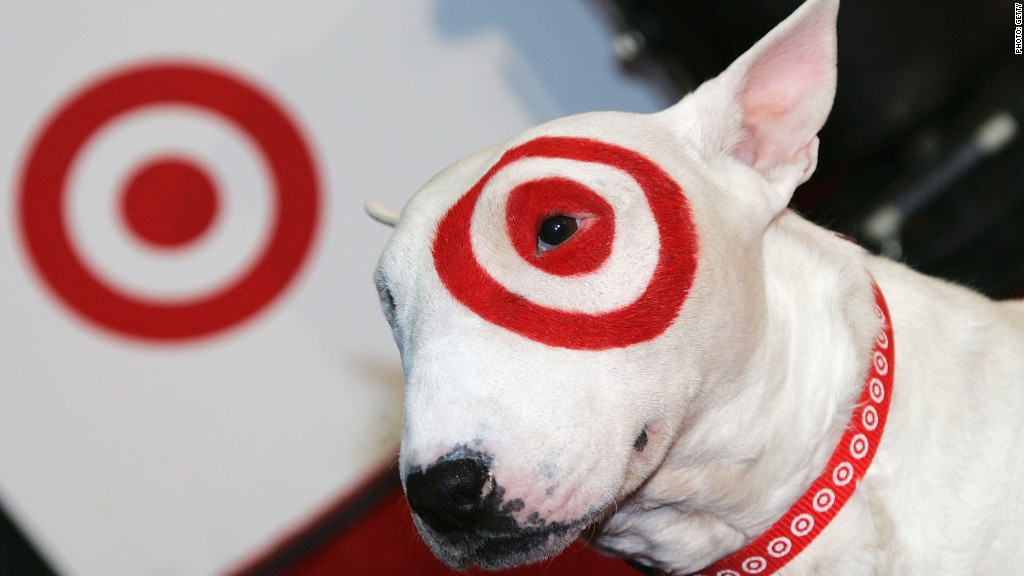
Shoppers flocked to Target stores -- and the company's website -- during the holidays. But it wasn't enough to satisfy investors, some of whom may have been disappointed to see that Target was already raising its minimum wage again.
Shares of Target (TGT) fell 5% in late trading Tuesday, despite a 10% jump in fourth quarter revenue and nearly 30% surge in digital sales from a year ago.
Investors were disappointed by the fact that Target's earnings were slightly below expectations. The company's outlook for the first quarter and full year were mostly in line with analysts' projections, though.
The company also said it was raising its hourly minimum wage again this spring, from $11 an hour to $12 an hour.
CEO Brian Cornell said in a presentation Tuesday that applications for seasonal jobs jumped more than 30% within days of last year's wage hike announcement and that the company had "a much stronger pool of talent" for the positions. That justifies the wage hike.
While that's great for workers, investors often worry about the higher costs associated with pay raises. Target raised its minimum last September and committed to a $15 per hour wage by 2020.
Target's stock has also been red hot this year, surging 15% in 2018 before Tuesday's news. So Wall Street was clearly banking on stronger results and guidance. Target already told investors in January that its sales during November and December were good.
And Target's sales growth shows that the company is finally back on track after several rough years.
Sales had been sluggish following a massive data breach in 2013, where the credit and debit card information of nearly 40 million customers were stolen. The stock missed out on much of the market's big rally during the past few years as a result.
Gregg Steinhafel, who had been CEO at the time of the hack, lost his job in 2014. But Cornell, who had been an executive at Pepsi (PEP) and former CEO of Walmart's (WMT) Sam's Club unit before taking over nearly four years ago, has re-energized the retailer.
Target has been busy launching new brands, such as the women's clothing line Universal Thread and home furnishing brands Heart & Hand with Magnolia and Opalhouse.
The company is clearly going after younger, social media savvy customers too. When it announced the Opalhouse launch last month, Target described it as an "eclectic aesthetic" that will help people "bring their Pinterest-worthy home design dreams to life."
Related: Meet the new Walmart customer -- higher-end and digital-savvy
Target has also made big strides with its e-commerce operations, and that's helped the company's sales as it tries to catch up to Walmart and Amazon (AMZN) in the online shopping race.
In fact, Target's online sales growth during the most recent quarter exceeded Walmart's, which slowed to 23% during the holidays.
Shares of Walmart are down nearly 10% this year too as investors have started to worry that Walmart is losing momentum after a flurry of online acquisitions.
But Target still trails Amazon, whose sales surged nearly 40% in the fourth quarter.
And Target's significant investments in its online shopping business are hurting profits in the short-term. The company said its margins in the fourth quarter were lower than a year ago due to "pressure from digital fulfillments costs."
Cornell conceded in the company's earnings announcement that Target has more to do before its turnaround is complete.
"While we have a lot left to accomplish, our progress in 2017 gives us confidence that we are making the right long-term investments to best position Target for profitable growth in a rapidly changing consumer and retail environment," he said.
Target has indeed made a nice rebound lately and Wall Street has rewarded it for that. So it can't afford to stumble now that it has a bull's-eye on its back.

